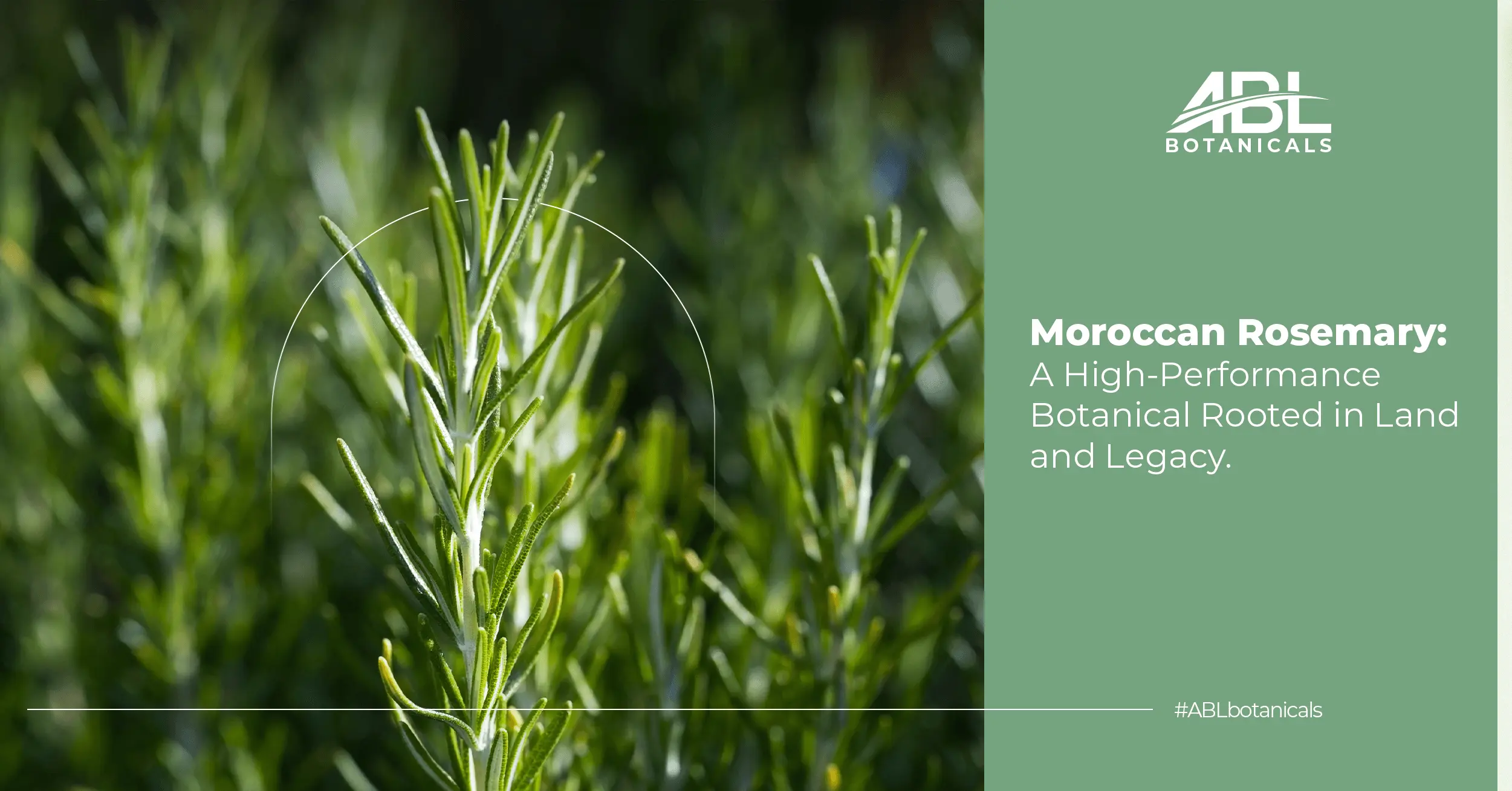In the arid, sun-drenched regions near the Atlas Mountains, rosemary thrives. The harshness of the Moroccan climate, with its dry winds and dramatic shifts between day and night temperatures, triggers a biological response in rosemary that increases the concentration of its active compounds. This makes Moroccan rosemary not just an aromatic staple, but a high-performance botanical with measurable benefits for buyers across fragrance, wellness, and cosmetic industries.
Used for centuries in Moroccan kitchens and traditional medicine, rosemary is now gaining attention from wellness brands, perfumers, and formulators for its distinct profile and versatile benefits.
Terroir-Driven Chemistry: How the Climate Shapes Composition
Environmental stress is a driver of secondary metabolite production, and in rosemary, this translates into higher concentrations of key volatile compounds.
Our rosemary oil consistently tests rich in:
- 1,8-Cineole (typically 35–45%): respiratory stimulant, cognitive aid.
- Camphor (up to 20%): antimicrobial, circulatory stimulant.
- α-Pinene: known for anti-inflammatory, bronchodilatory effects.
The plant’s exposure to long photoperiods, dry soils, and fluctuating temperatures prompts increased production of these volatiles as a survival response. The result? A sharper, more defined chemotype ideal for applications requiring purity, consistency, and olfactory clarity.
Bi-Seasonal Harvesting: Timing for Potency
Unlike many rosemary producers limited to a single annual harvest, our Moroccan rosemary allows for two key harvesting windows:
- Winter cycle: January–March
- Summer cycle: June–August
This dual schedule is made possible by the regional climate, allowing us to supply fresh oil with consistent profiles year-round. Harvesting is conducted at full bloom, when oil sacs are most developed, and is followed by rapid on-site drying and steam distillation.
Post-harvest management is critical. Moisture control, distillation parameters, and storage conditions are calibrated to maintain low peroxide values and preserve the oil’s terpene balance.
Traceability and Technical Assurance
Every batch we produce is accompanied by:
- Full harvest documentation (location, date, conditions)
- GC-MS analysis (with threshold ranges and variance tracking)
- COA & batch validation
- Internal microbial & heavy metal screening (upon request)
We work closely with R&D and procurement teams to ensure compatibility with international guidelines and can support partners with batch forecasts aligned to long-term sourcing plans.
Applications with Depth and Range
Our Moroccan rosemary oil is used across multiple industry sectors:
- Fine and functional fragrance: as a fresh, herbaceous top or heart note.
- Scalp and skin formulations: antioxidant support and antimicrobial action.
- Respiratory wellness blends: due to its cineole-rich profile.
- Natural cleaning and air purification: valued for its clarity and volatile stability.
Thanks to its defined chemotype and clean extraction, the oil performs reliably in both water-based and oil-based formulations.
Responsible Cultivation at Scale
At ABL Botanicals, rosemary is part of our wider commitment to agroecological production:
- No chemical inputs
- Rain-fed cultivation
- Zero-waste distillation (biomass composted)
Our agricultural teams work in coordination with our technical staff to align field decisions with lab needs, ensuring agronomy serves formulation, not the other way around.
Looking Ahead
Whether you are developing a flagship wellness product, a performance-driven skincare formula, or a high-impact fragrance, our Moroccan rosemary oil offers a reliable base with sensory and functional value.
For full specs, availability, and pre-harvest contracting: sales@ablbotanicals.com

